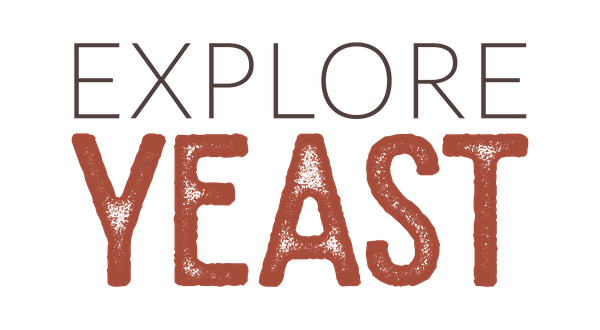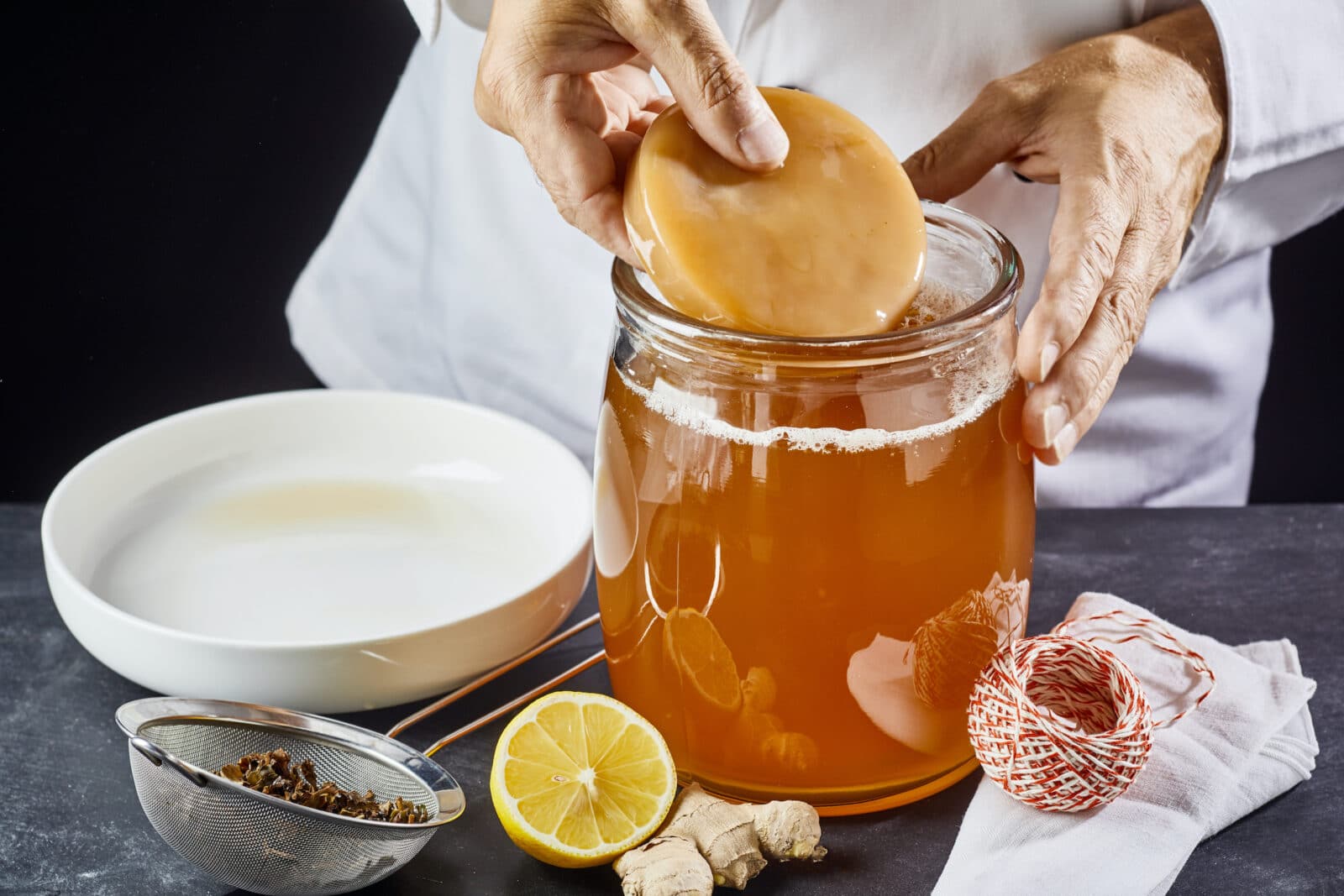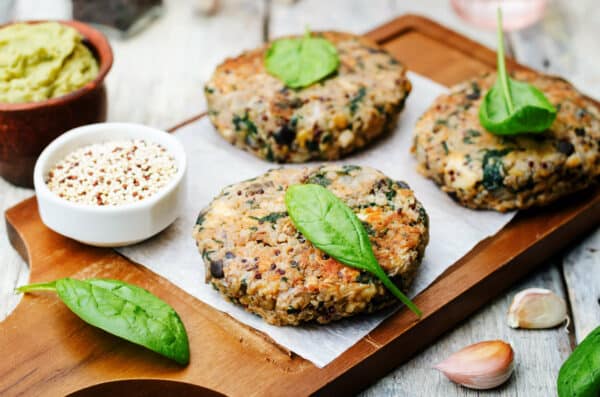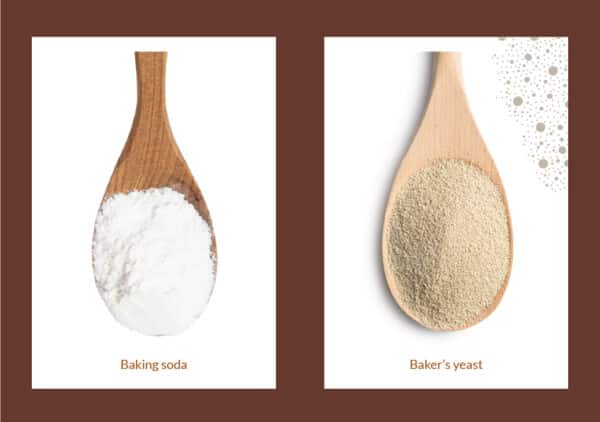As a factory, yeast is naturally capable of modifying and combining several simple molecules, taken from its environments, such as sugars, lipids, and amino acids, and synthesizing all elements needed for its growth. Thanks to a wide range of scientific and technical knowledge which has been accumulated on yeast in the past twenty years, these “cellular factories” can now be used to produce molecules for various purposes in industrial quantities. These processes have also become eco-friendlier and more made possible by using renewable raw materials.
Let’s explore some of the many things that yeast can be used for!
How is Yeast Used in Baking?
Baking is the most well-known use of yeast. Bread, made with flour, water, and salt is now eaten all over the world in a variety of shapes and forms. But to obtain light, well-risen bread with an airy crumb, another ingredient is indispensable: yeast!
During fermentation in bread-making, yeast produces carbon dioxide and modifies the physical properties of dough through the action of enzymes. First, the yeast ferments sugars which directly assimilates and is naturally present in the flour. The second phase corresponds to the fermentation of sugar found in flour called maltose. Glucose is transformed by yeast into carbon dioxide (which gives volume to bread and the honeycomb shape of the crumb) and into alcohol (evaporated when baked). Yeast also produces aromatic compounds that contribute to the aroma and taste of bread. Lastly, during baking fermentation, it is activated by heat and ends when the temperature reaches 50°C.
Yeast and baking powder should not be confused. While yeast is a living natural organism, baking powder is a chemical leavening agent. Unlike baking powder and baking soda, yeast leavens dough through a natural biological process, which results in fermentation.
Learn more about yeast and bread!
How is Yeast Used in Health and Nutrition?
Yeast may also have significant health benefits when ingested by living beings. These living beings can be humans, animals, or even plants!
Yeast is commonly used as a food supplement by humans and as a zootechnical additive in pet food. Yeast is high in vitamin B, D2, and protein. Researchers are actively working to improve the production of these beneficial nutrients from yeast.
The application of yeasts as a probiotic is another very dynamic area for use. Not only does yeast contributes to the good balance of gut microbiota, but it also interacts with certain pathogens by occupying the space they could invade (barrier effect). Yeast may also have a direct effect on some toxins that have a negative impact on human or animal health.
Yeast may also benefit the gut microbiota of the host – human, animal, or plant – in cases of inflammation or immunity reactions. This may be especially beneficial for people who are suffering from intestinal discomfort or diarrhea.
Furthermore, yeast is one of the preferred and predominant components for large-scale commercially produced insulin.
Lastly, there is growing research and developments on the use of yeast for cosmetology, including products that may benefit one’s hair, nails, and skin.
Learn more about the health benefits of yeast!
Yeast in Food Taste and Fermented Drinks
Like yeast, yeast extract is a natural ingredient used by many professionals in the food industry. Like traditional yeast, it offers high nutritional value but does not have the same purpose. Used in cooking, yeast extract can improve the taste of dishes, similar to herbs or spices. Yeast extract is 100% natural and can fit with a plant-based diet. That is why it is not considered to be an additive. Yeast extract may improve the flavor of many food products (soups, sauces, stock cubes, savory snacks, snacks, prepared dishes, sausages, etc.). Its taste value allows vegetarians and vegans to flavor their dishes without adding animal ingredients. Moreover, it is also suitable for low-salt products.
Learn more about yeast extracts!
As you have already learned, yeast is a catalyst for the fermentation process. And as you may already know many beverages including beer, wine, whiskey, and other spirits are made through fermentation using yeast. In the absence of air, yeast cells transform sugars into carbon dioxide and alcohol. This process is used to make all types of fermented beverages.
Did you know that winemakers, brewers, and distillers select specific strains of yeast to use to make their beer, wine, and spirits?
The different strains of yeast used for making these beverages can have very specific features which can adapt to certain substrates (fruit, grapes, grain, beet, malt, etc.). Each strain can also enhance flavors in the finished product!
Learn more about the use of yeast for fermented drinks!
Yeast Use in Biotechnologies
Biofuels are sources of energy produced from crops. They are designed as a solution to the environmental and economic problems incurred by fossil fuels. Biofuels have attracted growing interest from researchers since the 1970s.
Yeast is capable of transforming plant sugars into fuel. The magic works during the anaerobic process (in the absence of air) of fermentation. Under the action of yeast enzymes, sugars (in particular glucose) contained in cellulose or starch are transformed into ethanol.
First-generation biofuels were obtained using natural food crops and sugar plants. Researchers are now looking to spur innovation in second-generation biofuels which will be obtained from more diversified resources, taking cellulose from plant fibers not grown for human food consumption. This could in turn reduce the world’s reliance on fossil fuels and support a greener and more sustainable future for all!
Researchers are constantly finding new ways to utilize this versatile organism that can benefit not only humans but also, as we have seen, animals, plants, and the whole planet! While the average yeast is only 3-4 micrometers, its potential is far greater than its size and the possible uses of yeast are immense and ever-growing!




